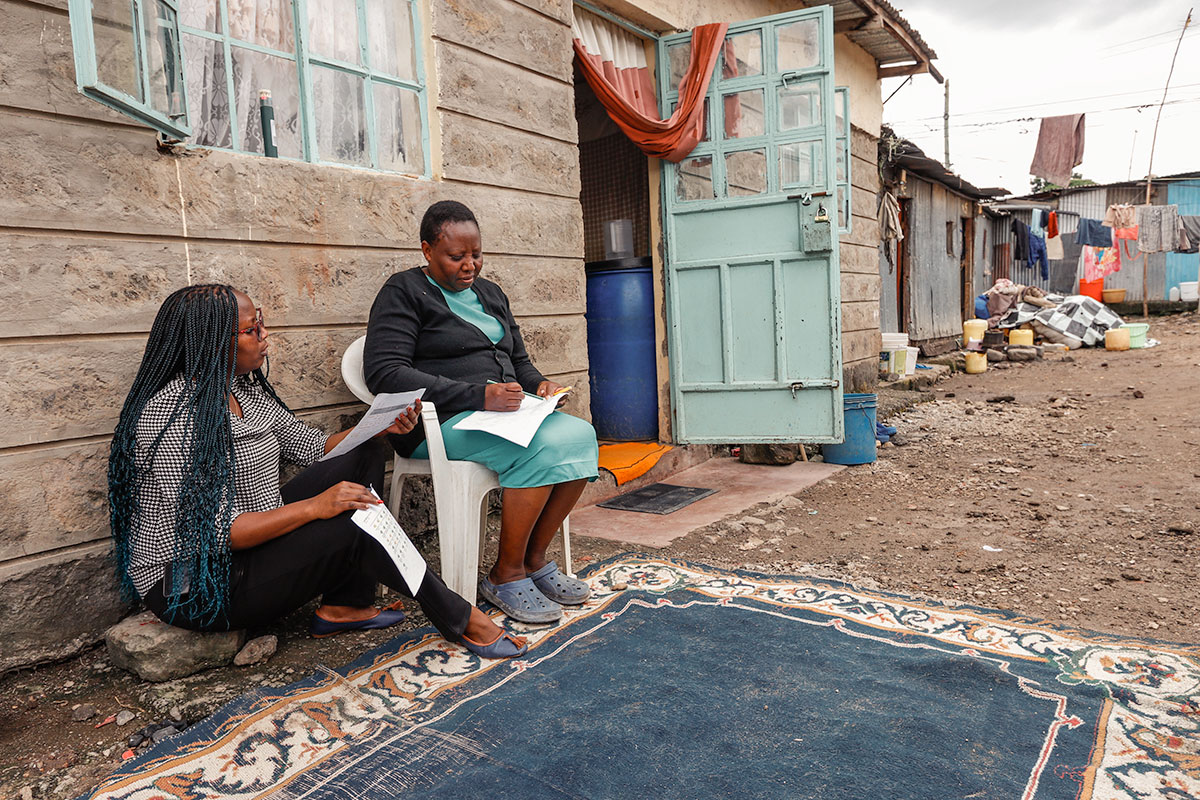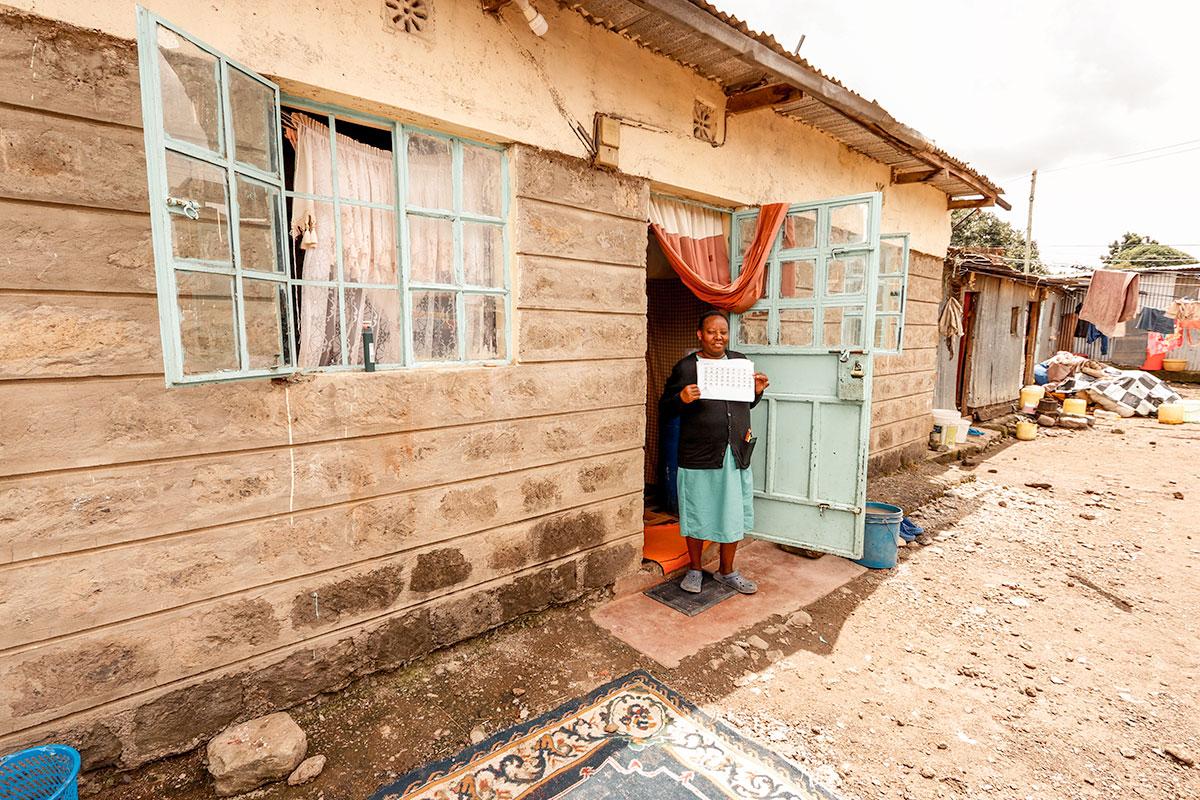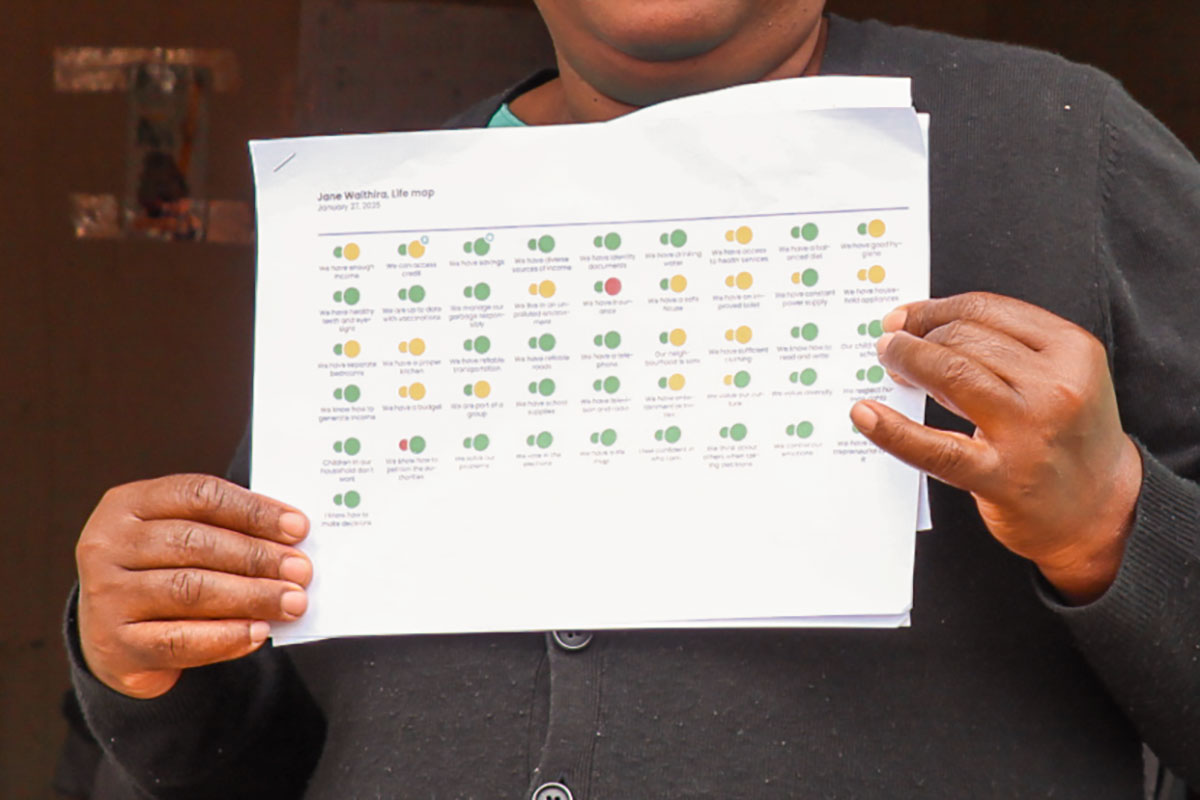Like many mothers who carry their small children shopping with them, Jane at first felt regret as her son Travis had a public tantrum at the market one day over an item he wanted.
He wouldn’t take “no” for an answer, not even when the distraught mother of three thought to placate him by offering a more affordable, sweet treat instead.
“I almost punished him along the road for crying that time,” Jane recalled. “I was going to buy him a donut, but he instead wanted a tin home bank.”
A tin home bank — largely referred to in the U.S. as a “piggy bank” — might seem like an odd thing for a 10-year-old child to want, but Travis had already learned firsthand the benefits of being frugal.
Jane, whose husband leases construction equipment, operated a small business that failed during the COVID-19 pandemic. During that time, she sent her children out into their Nairobi neighborhood to sell fruit.
“That’s when Travis started saving,” Jane said. “I remember that year, every child in my house had saved $30. We did not struggle with Christmas because everyone had their own savings to use.”
The day of Travis’ tantrum in the market fondly stands out in her mind now, almost five years later, because that was the first time someone had challenged her notion that living in poverty meant her family would never be able to save money.
The second time this notion of Jane’s was challenged was after she took Unbound’s Goal Orientation powered by Poverty Stoplight survey.
Except this time, the challenge spurred her into action.
October 20, 2025 | Child Sponsorship
A savings tin and a challenge
A family improves their financial stability using Poverty Stoplight as a guide
By Kati Burns Mallows

Jane is the mother of sponsored youth Travis, 15, and aspires to improve her family’s living conditions in Nairobi. Taking the Poverty Stoplight survey was a “wakeup” call for her that inspired her to begin saving with more intention.
Progress begins with self-awareness
Progress in overcoming poverty isn’t always visible or easily measured, like a person gaining safe housing or stable employment.
Sometimes progress begins within the person — the kind of progress that increases self-awareness and confidence, and leads to a quiet, determined hope.
Jane had little hope for overcoming her family’s situation when she first took the Poverty Stoplight assessment. “Trying” had never even crossed her mind because they were simply surviving day to day.
“It’s challenging to save from the little amount one earns,” Jane said. “Before we even started, we were down. Even the savings from Unbound (sponsorship benefits) were minimal.”
Unbound has had four years of sustained progress using Poverty Stoplight, a tool that helps families to clearly see their strengths and needs and set goals for overcoming poverty.
When Jane took the survey, she was guided through 46 poverty indicator images and questions organized under themes (called dimensions) and marked each with a color that she believed fit her family’s life reality — red to indicate extreme poverty, yellow to indicate poverty or green to indicate no poverty.

The Poverty Stoplight survey is readministered to families annually to monitor their progress toward their goals and to set new goals. Because poverty looks different from one place to another, poverty indicator questions vary by community.
The results revealed her family was largely experiencing extreme poverty in the dimension for “Housing and Infrastructure.” This was due to the family not having a modern toilet and instead using a pit latrine. Also, one room in their tiny two-room home doubled as both the kitchen and a bedroom, and the home had no electricity.
For Jane, progress began with these results, which were a realization that she calls “the painful truth.”
“Those questions felt like someone was hitting [me] hard on the head with a hammer,” Jane recalled. “When they ask you if your kitchen stove uses charcoal or gas, and you use charcoal while another person [says] they use gas, you realize you are the one living in poverty. So, you are motivated to work hard not to feel [left behind].”
The Unbound staff guided Jane to create a life map, a plan filled with the steps her family would take to change their red and yellow indicators to green.
So far, families in Unbound’s programs across three regions of the world have changed over 1.2 million poverty indicators to green, effectively improving in all dimensions but especially in the areas of job access, savings and access to health services.
But Jane’s red indicators weren’t easy obstacles to overcome. Turning red indicators under “Housing and Infrastructure” to green can take a family years to achieve.
If she was going to be successful reaching her long-term goals, Jane had to take the first step — building up the family savings.

Unbound Nairobi social worker Florence Wawira pays a home visit to Jane to check in with her on progress toward reaching her goals.

Wawira discusses Jane’s last Poverty Stoplight assessment, noting milestones achieved toward reaching her goals and areas where she might set new goals.
Those [Poverty Stoplight] questions felt like someone was hitting [me] hard on the head with a hammer. When they ask you if your kitchen stove uses charcoal or gas, and you use charcoal while another person [says] they use gas, you realize you are the one living in poverty. So, you are motivated to work hard not to feel [left behind].
— Jane, Mother of Unbound sponsored youth Travis in Nairobi
Improving financial stability by practicing saving
Three years ago, Jane struggled to save barely $5 a month. Today, she has doubled her monthly savings amount and sometimes even saves twice in one month.
She found the motivation to put forth more effort to save through her Unbound mothers support group and as a member of the Unbound Savings and Credit Cooperative (SACCO), but also through healthy competition shared with members of her Catholic church group.
According to Rachel Muthoni, a social worker with Unbound Nairobi, 95% of Unbound SACCOs are managed by the mothers of sponsored children. As a member of SACCO, individuals who practice consistently saving can qualify for loans with low interest rates for things like boosting a small business or improving their housing situations.
Members are encouraged to each save a minimum of $5 a month. Building good credit can be a powerful tool for economic mobility, helping to build long-term financial stability for individuals in poverty who have limited financial resources.
“The end-term goal with SACCO is to offer financial literacy to [parents] and also, at the end of the day, we want to cultivate a culture of saving for tomorrow,” Muthoni said.

Unbound Nairobi social worker Rachel Muthoni has spent the last 15 years guiding families in Unbound’s programs as they work to overcome poverty.
Jane said saving with Unbound SACCO is important because the more a person saves, the higher their chances are of being able to access a large loan. She has learned to adopt many steps to work toward her goals, some of which have meant lifestyle changes. When her son’s sponsorship funds are not being spent on his education, she saves a small amount. She also takes on casual jobs when she can and puts those earnings into saving.
“Even when I’m tempted to buy [something for myself], I pinch myself and remind myself that I have a saving goal to meet,” Jane said. “I have to endure the pain to enjoy the gain.”
Jane has taken on the role of secretary of her mothers group and has found unexpected motivation to save by challenging herself to save more than other mothers.
“I’m motivated when I see fellow mothers saving large amounts, which raises the scope of accessing a big loan,” Jane said. “For me, to achieve my saving goal, I have one [rule] — I don’t want to be defeated.”
As her savings continue to grow, Jane eventually plans to build a kitchen separate of the bedroom and install a modern toilet at her home. Her next long-term goal after that is to construct a small housing unit that she can rent out for supplementary income.
While each follow-up Poverty Stoplight survey reveals Jane has turned more of her family’s poverty indicators from red to yellow and green, the greatest benefit it has given to Jane is clarity about her priorities.
By fostering a culture of saving, Jane’s family has now developed a sustainable path toward overcoming poverty and enhancing their overall quality of life.

Jane fills in new poverty indicators using red, yellow or green colored pencils.

Jane has established a culture of saving in her family and is well on her way to obtaining more of her long-term goals, such as expanding her two-room house to include a kitchen.

Jane’s follow-up Poverty Stoplight life map now shows more green (no poverty) and yellow (poverty) indicators than red (extreme poverty), meaning she is successfully moving her family down a path to one day be free from poverty.
Unbound Regional Reporter in Africa Nickson Ateku contributed information and photos for this story.